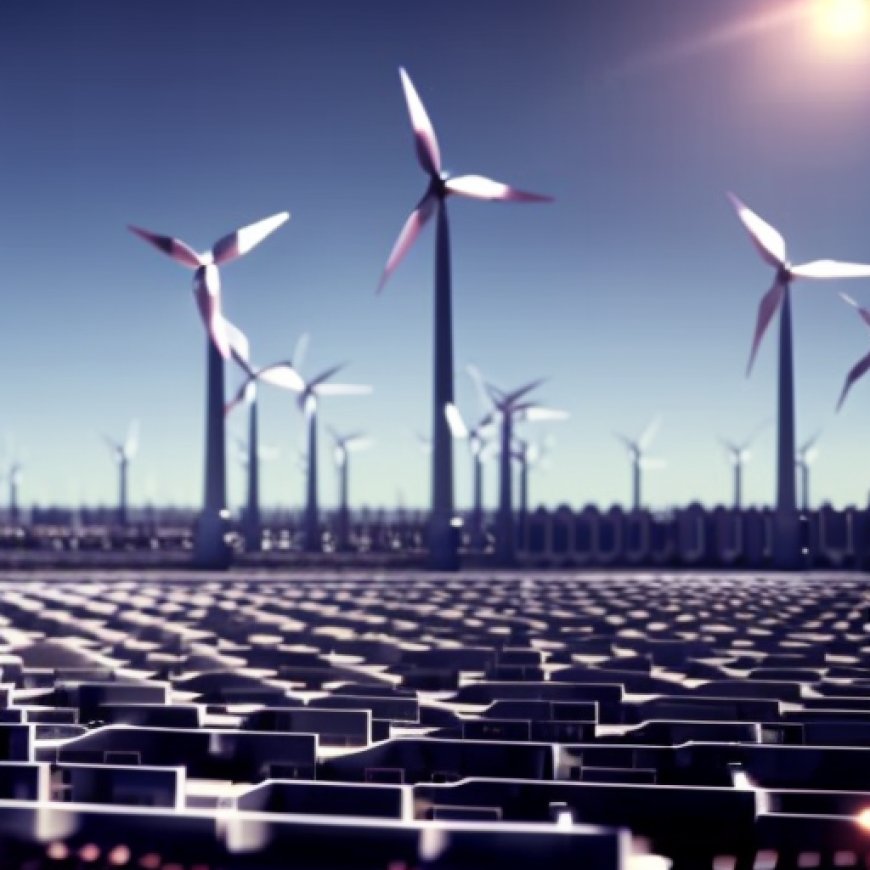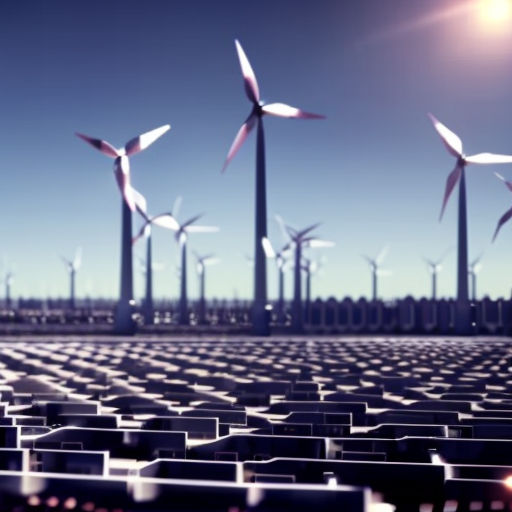Can Smart Substations Enhance Grid Stability for Renewable Energy Sources? | AltEnergyMag
Can Smart Substations Enhance Grid Stability for Renewable Energy Sources? AltEnergyMag


Can Smart Substations Enhance Grid Stability for Renewable Energy Sources?
By Emily Newton | Revolutionized
A smart substation transforms an antiquated power plant into an optimistic insight into the Earth’s sustainable future. Impactful U.S. and global infrastructure bills are distributing funds to help energy providers enter a new era of data-driven, clean generation.
Will grids be able to handle the massive upgrade? Renewable energy installers, developers and everyone in between must assert smart substations as the solution for making a more resilient, scalable grid.
What Can Smart Substations Do?
Step-up, step-down and distribution substations are responsible for some of the critical services in energy that many overlook. Transmission and distribution substations move energy long distances after converting it to necessary voltages. Today’s energy market needs dynamism and data, which 50-year-old substations do not have built-in to their hardware.
The grid is amid a transformation alongside substations, outfitted with more substantial materials and integrated control systems with sensors. The smart transition has to overcome:
- Environmental challenges
- Market and consumer needs
- Infrastructure hurdles
- Adopting innovative technologies
Smart substations address all of these issues and force energy providers to instigate a much-needed upgrade. Legacy systems are less effective, too costly to repair and unable to relay insights to operators. They are not suited for modern renewable energy. They cannot tell how well transformers are performing or diagnose concerns for preventive maintenance before relays experience catastrophic failures.
A smart substation automates processes more accurately while gathering data about what channels need resources. Then, it optimizes for financial and energy savings. Smart substations perform proactively, shifting their abilities with incoming information instead of assuming energy needs are static.
Consider how some panels in an array may have failing inverters, impacting performance — smart substations consider these influences to maintain optimal performance. Substations perform these tasks while abating shutdowns or downtime because they must remain online constantly.
How Does the Renewable Grid React to Smart Substations?
Smart substations put less pressure on the grid, making it act more resourcefully. They are the reason for stabilization. Instead of bottlenecking transmissions because they don’t know how to handle power flow, smart substations could calculate the ideal voltage beforehand. Extra voltage is deposited in energy storage systems or delivered to neighborhoods that use more energy than average.
Renewable energy in large deployments mitigates reliability concerns. However, it is inarguable that renewable energy is not a constant power source. Solar and wind farms rely on environmental conditions outside of human control.
Smart substations alleviate dependability concerns, providing constant clean energy sources during peak and lower usage times. They have the potential to allocate energy to storage for use during natural disasters until emergency services are capable of putting systems back online.
Smart substations help the grid perform by considering two-way energy transference. Utility providers are used to being the primary source of energy distribution. The modern grid will maintain stability when smart substations and other peripherals consider other distributed energy sources, such as microgrids, electric vehicles, rooftop solar and even data centers providing power to communities. Smart substations make it possible to connect these seemingly disparate renewable energy sources.
How Do Smart Substations Promote Renewable Buy-In?
The world’s energy sectors are in a liminal space. Energy professionals must deploy smart substations and renewable energy plants while expediting research and development. Studies are necessary for encouraging legislative funding and consumer advocacy for renewable power. Experts leverage smart substations to bolster research while experimenting with other facets of renewable technologies to mitigate variability and improve performance.
For example, the wind industry needs to test blades. They trial new blade materials, lengths and thicknesses for productivity. Smart substations gather how these parts perform compared to alternatives, better informed financial and labor investments.
Substations collate the data professionals need to convince industries to prioritize renewable energy adoption and grid modernization. The most reluctant corporations cannot argue with data proving how beneficial smart substations are for catalyzing the efficacy of renewable systems. Data also assists compliance frameworks for keeping smart substations and connected technologies protected, such as the IEC 61850 standard dictating ethical substation use.
Incorporating smart substations with renewable energy sources creates more job opportunities for workers to upskill. Existing personnel can learn and adapt to new technologies, and their years of expertise make them ideal candidates for ushering in a new age of substation operations. They have insider information about how the technology will integrate with legacy systems, making the transition more streamlined and considerate of multiple perspectives.
What Are the Advantages Smart Substations Provide Renewable Energy?
Critical infrastructure is a leading target for cyberattacks, meaning the new grid and its smart substations are at risk. Substations are energy conduits and are responsible for stopping cyber threats before compromised data and energy stores travel to customers.
Current systems are already targets, meaning upgrades provide an opportunity to enhance cybersecurity protocol. Smart substations protect renewable energy generators more than traditional alternatives because they consider the current climate of digital threats.
Sensors in substations provide real-time analytics that notify operators for immediate action. Technicians no longer need periodic on-site inspections to determine faults, execute repairs or gather numbers. Everyone knows immediately if there are atypical deviations or fluctuations and can access information in smart hubs that display data in accessible formats.
Recently, fossil fuel companies have had to put out notices asking residents to decrease power consumption during natural disasters or heat waves. Still, smart substations allow staff to see changes before they become too drastic to handle. The advanced analytics allow workforces more insight into how to dictate unexpected times of energy generation for renewable power.
For example, suppose the climate is vastly different from last year’s season to the point of potential emergency. In that case, renewable energy providers can communicate more proactively to residents about how to best use their resources and assist the load for power providers.
Smart Substations Make Sturdy, Modern Grids
The information smart substations provide to energy professionals is invaluable for integrating renewables into an ever-changing grid. The substations provide information as systems grow and evolve, allowing for more organic transformation than one riddled with trial and error.
The advantages of smart substations must motivate energy manufacturers, managers and installers to learn more through novel research. It is the key to accelerating the adoption of smart tools for a more resilient grid that is better for people and the planet.
The content & opinions in this article are the author’s and do not
SDGs, Targets, and Indicators
SDGs Addressed in the Article:
- SDG 7: Affordable and Clean Energy
- SDG 9: Industry, Innovation, and Infrastructure
- SDG 11: Sustainable Cities and Communities
Targets Identified Based on the Article’s Content:
- Target 7.2: Increase substantially the share of renewable energy in the global energy mix
- Target 9.1: Develop quality, reliable, sustainable and resilient infrastructure, including regional and transborder infrastructure, to support economic development and human well-being
- Target 11.2: Provide access to safe, affordable, accessible and sustainable transport systems for all
Indicators Mentioned or Implied in the Article:
- Indicator 7.2.1: Renewable energy share in the total final energy consumption
- Indicator 9.1.1: Proportion of the rural population who live within 2 km of an all-season road
- Indicator 11.2.1: Proportion of population that has convenient access to public transport, by sex, age and persons with disabilities
Table: SDGs, Targets, and Indicators
| SDGs | Targets | Indicators |
|---|---|---|
| SDG 7: Affordable and Clean Energy | Target 7.2: Increase substantially the share of renewable energy in the global energy mix | Indicator 7.2.1: Renewable energy share in the total final energy consumption |
| SDG 9: Industry, Innovation, and Infrastructure | Target 9.1: Develop quality, reliable, sustainable and resilient infrastructure, including regional and transborder infrastructure, to support economic development and human well-being | Indicator 9.1.1: Proportion of the rural population who live within 2 km of an all-season road |
| SDG 11: Sustainable Cities and Communities | Target 11.2: Provide access to safe, affordable, accessible and sustainable transport systems for all | Indicator 11.2.1: Proportion of population that has convenient access to public transport, by sex, age and persons with disabilities |
Explanation:
– The article discusses the importance of smart substations in enabling a more resilient and scalable grid for renewable energy sources. This aligns with SDG 7 (Affordable and Clean Energy), which aims to ensure access to affordable, reliable, sustainable, and modern energy for all.
– The targets identified from the article’s content are directly related to the SDGs mentioned:
– Target 7.2 focuses on increasing the share of renewable energy in the global energy mix, which is addressed in the article’s discussion on the need for smart substations to support the integration of renewable energy sources into the grid.
– Target 9.1 emphasizes the development of quality, reliable, sustainable, and resilient infrastructure, including regional and transborder infrastructure. The article highlights how smart substations contribute to the modernization and improvement of energy infrastructure.
– Target 11.2 aims to provide access to safe, affordable, accessible, and sustainable transport systems for all. The article mentions how smart substations enable the connection of distributed energy sources, such as microgrids and electric vehicles, to the grid, promoting sustainable transport systems.
– The indicators mentioned or implied in the article align with the identified targets:
– Indicator 7.2.1 measures the renewable energy share in the total final energy consumption, which is relevant to target 7.2 and the article’s focus on integrating renewable energy sources into the grid.
– Indicator 9.1.1 assesses the proportion of the rural population living within 2 km of an all-season road, reflecting the importance of accessible infrastructure mentioned in target 9.1.
– Indicator 11.2.1 evaluates the proportion of the population with convenient access to public transport, which relates to target 11.2 and the article’s discussion on smart substations enabling the connection of various renewable energy sources to the grid, including those related to transportation systems.
Behold! This splendid article springs forth from the wellspring of knowledge, shaped by a wondrous proprietary AI technology that delved into a vast ocean of data, illuminating the path towards the Sustainable Development Goals. Remember that all rights are reserved by SDG Investors LLC, empowering us to champion progress together.
Source: altenergymag.com

Join us, as fellow seekers of change, on a transformative journey at https://sdgtalks.ai/welcome, where you can become a member and actively contribute to shaping a brighter future.







